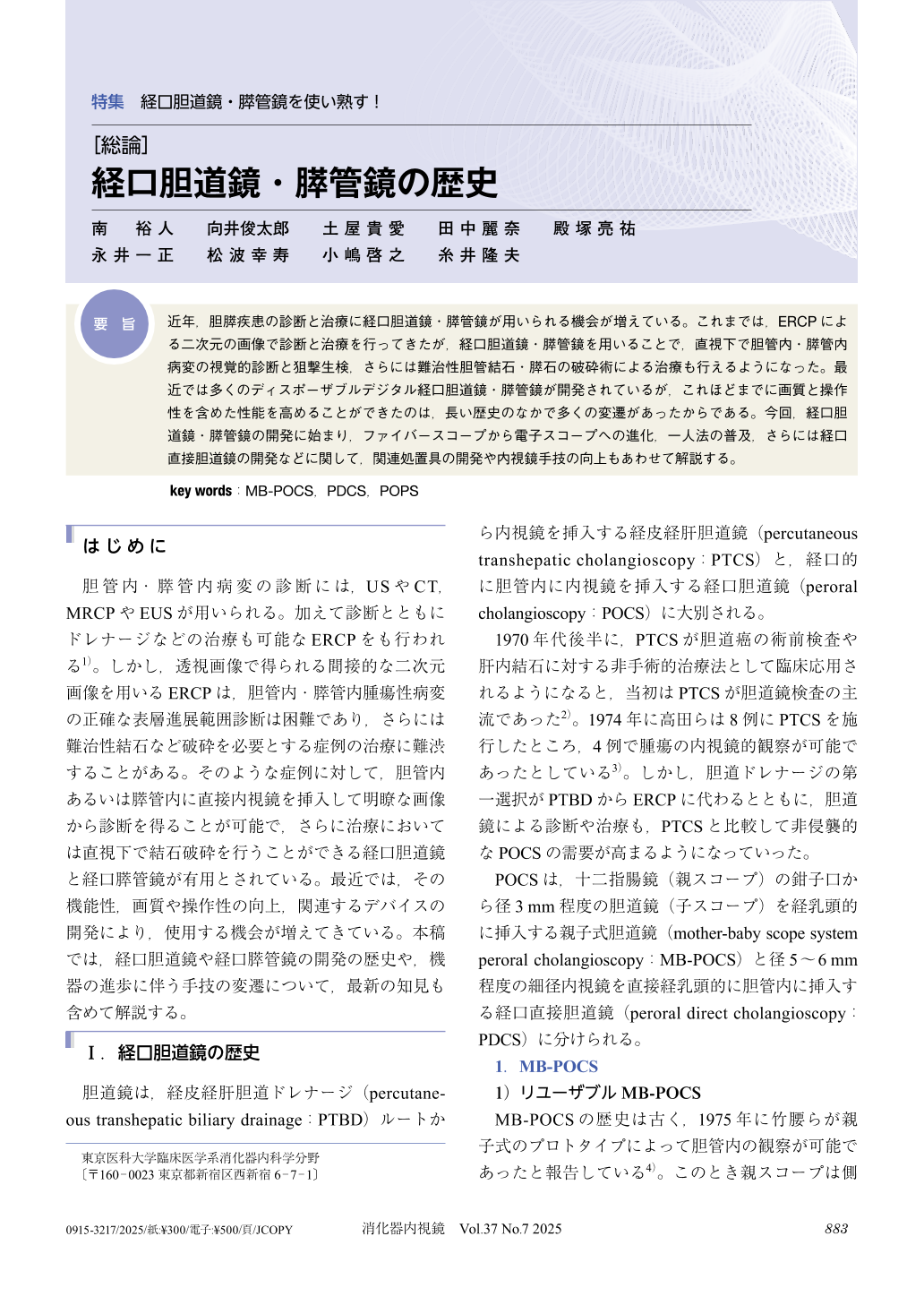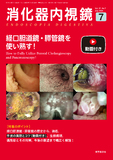Japanese
English
- 有料閲覧
- Abstract 文献概要
- 1ページ目 Look Inside
- 参考文献 Reference
要旨
近年,胆膵疾患の診断と治療に経口胆道鏡・膵管鏡が用いられる機会が増えている。これまでは,ERCPによる二次元の画像で診断と治療を行ってきたが,経口胆道鏡・膵管鏡を用いることで,直視下で胆管内・膵管内病変の視覚的診断と狙撃生検,さらには難治性胆管結石・膵石の破砕術による治療も行えるようになった。最近では多くのディスポーザブルデジタル経口胆道鏡・膵管鏡が開発されているが,これほどまでに画質と操作性を含めた性能を高めることができたのは,長い歴史のなかで多くの変遷があったからである。今回,経口胆道鏡・膵管鏡の開発に始まり,ファイバースコープから電子スコープへの進化,一人法の普及,さらには経口直接胆道鏡の開発などに関して,関連処置具の開発や内視鏡手技の向上もあわせて解説する。
In recent years, the use of peroral cholangioscopy and pancreatoscopy has become increasingly common in the diagnosis and treatment of biliary and pancreatic diseases. Traditionally, diagnosis and treatment were performed using two-dimensional imaging with ERCP; however, with peroral cholangioscopy and pancreatoscopy, it is now possible to directly visualize lesions within the bile and pancreatic ducts. This enables not only visual diagnosis under direct observation but also targeted biopsy and therapeutic procedures such as lithotripsy for refractory bile duct and pancreatic stones. Recently, numerous disposable digital peroral cholangioscopes and pancreatoscopes have been developed. The remarkable advancements in image quality and maneuverability would not have been possible without a long history of technological progress and transformation. This article provides a comprehensive overview of the development of peroral cholangioscopy and pancreatoscopy, including the transition from fiberscopes to electronic scopes, the popularization of the single-operator method, and the development of direct peroral cholangioscopy. In addition, it highlights the evolution of related devices and improvements in endoscopic techniques, which have collectively contributed to the significant advancements in this field.

© tokyo-igakusha.co.jp. All right reserved.


